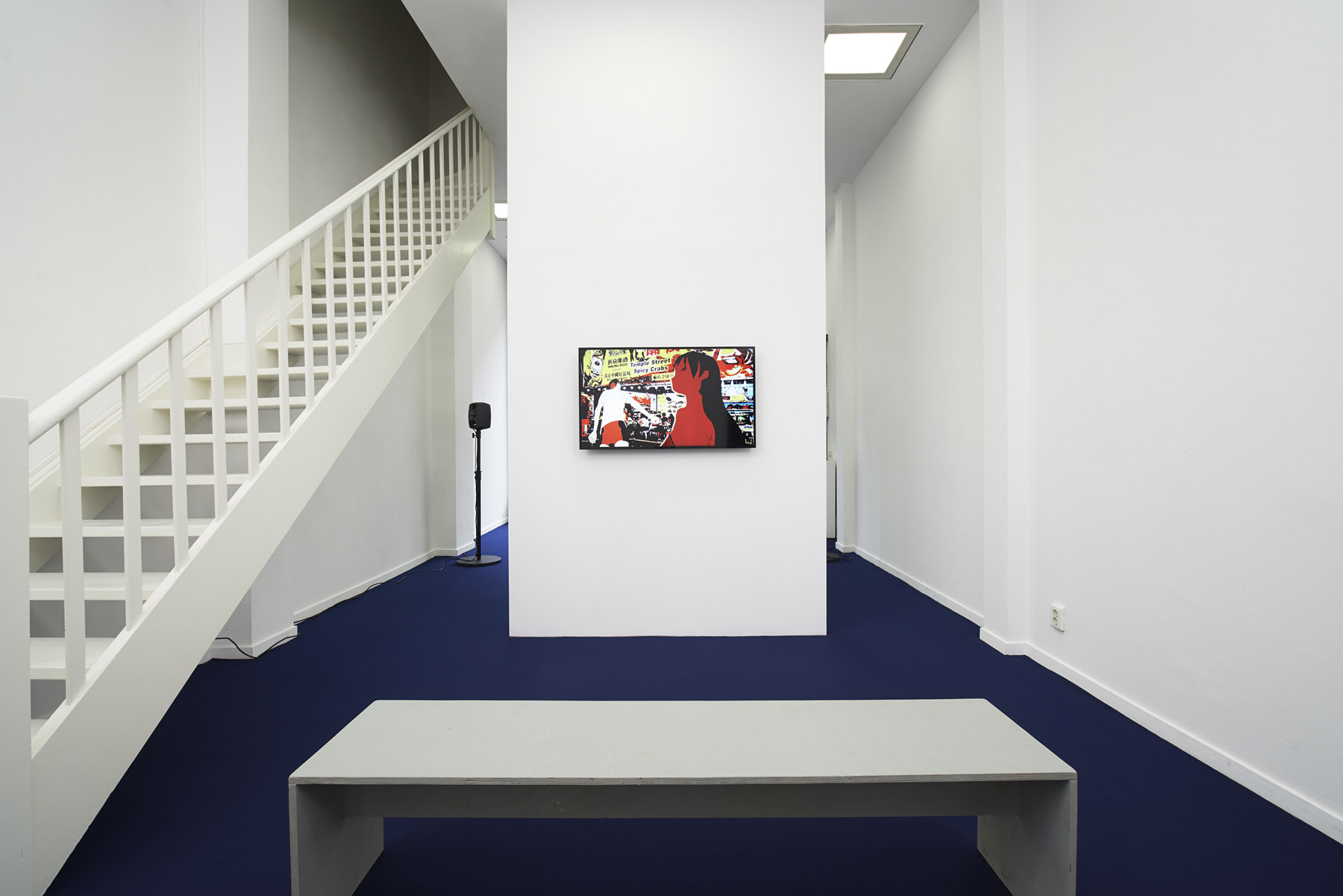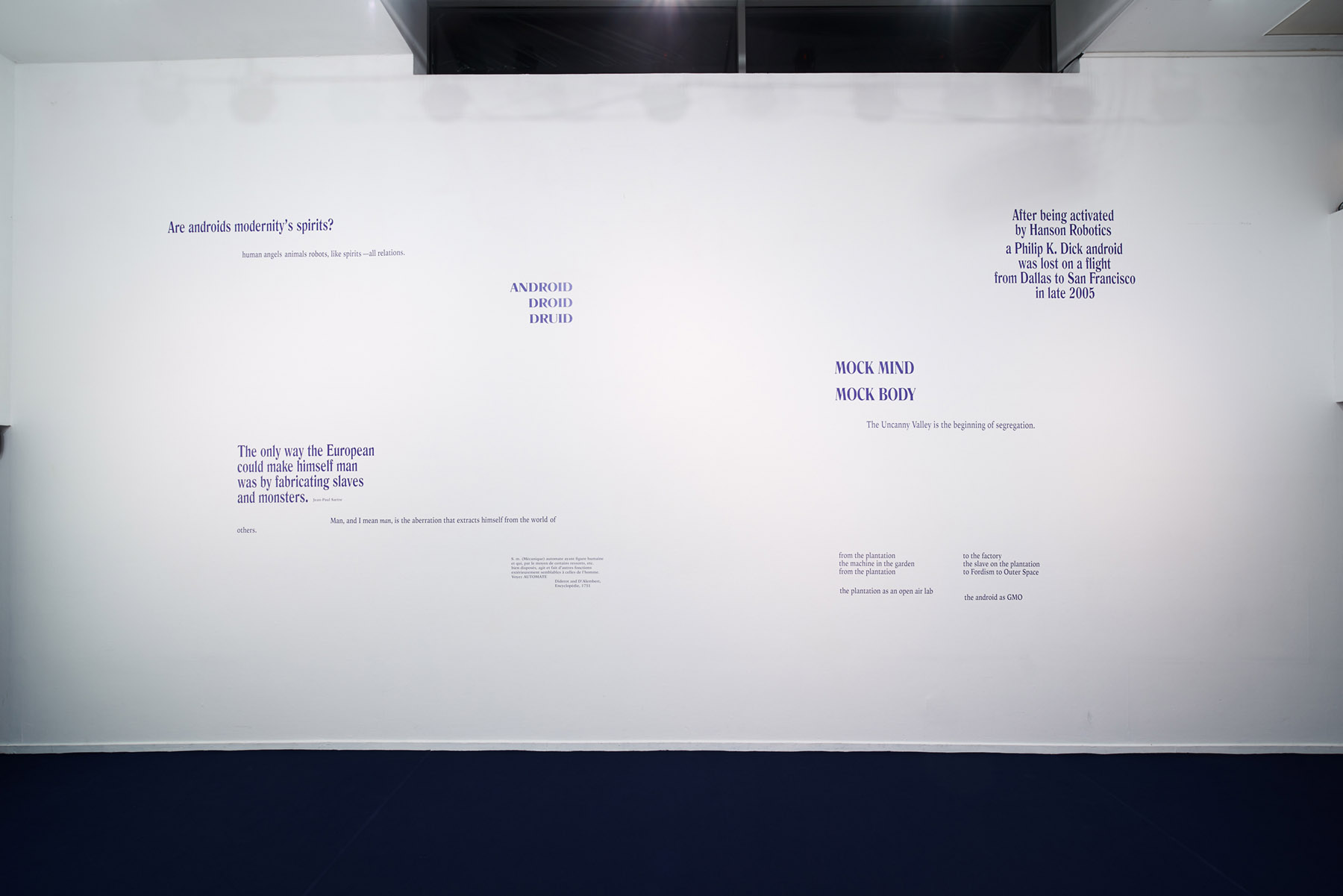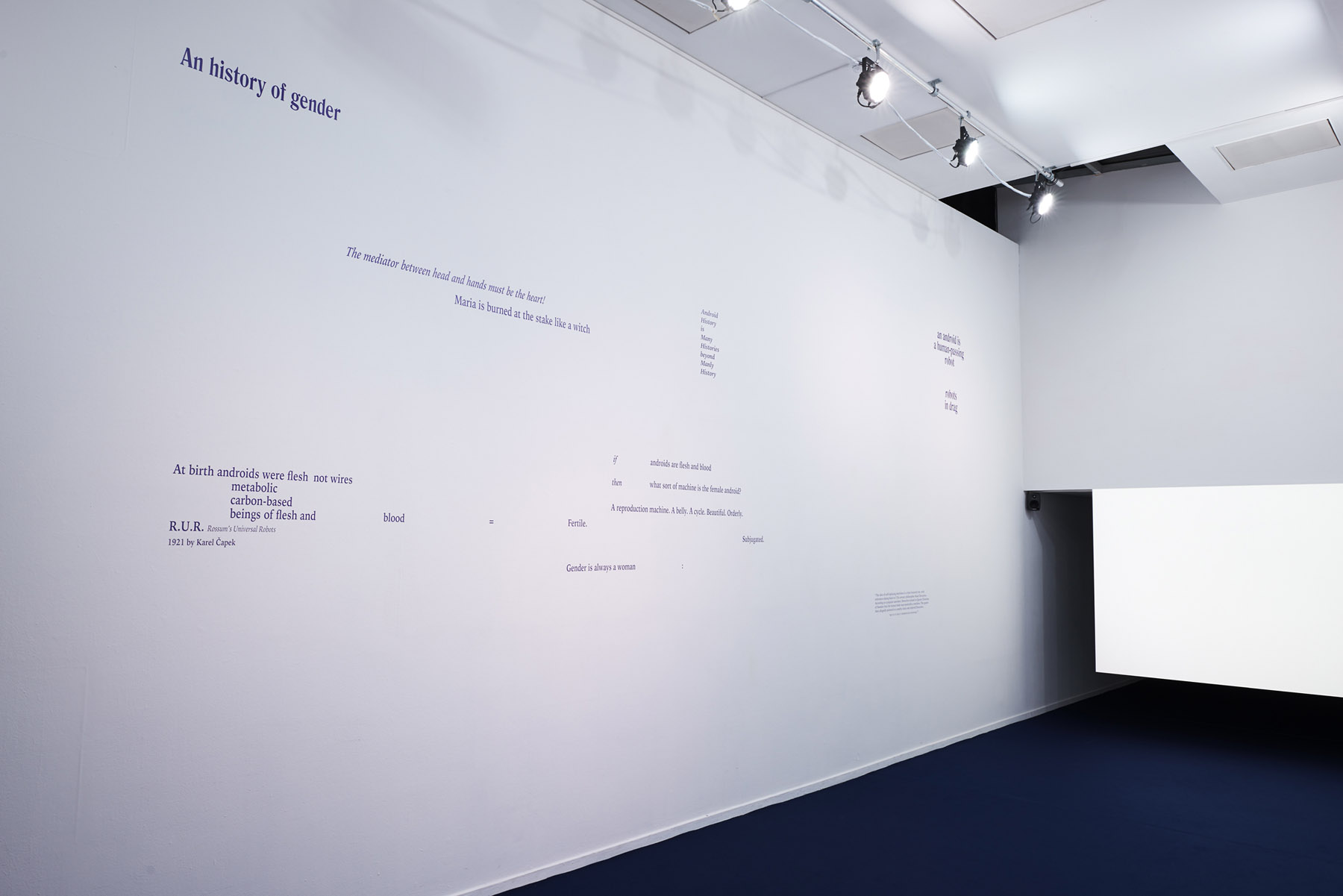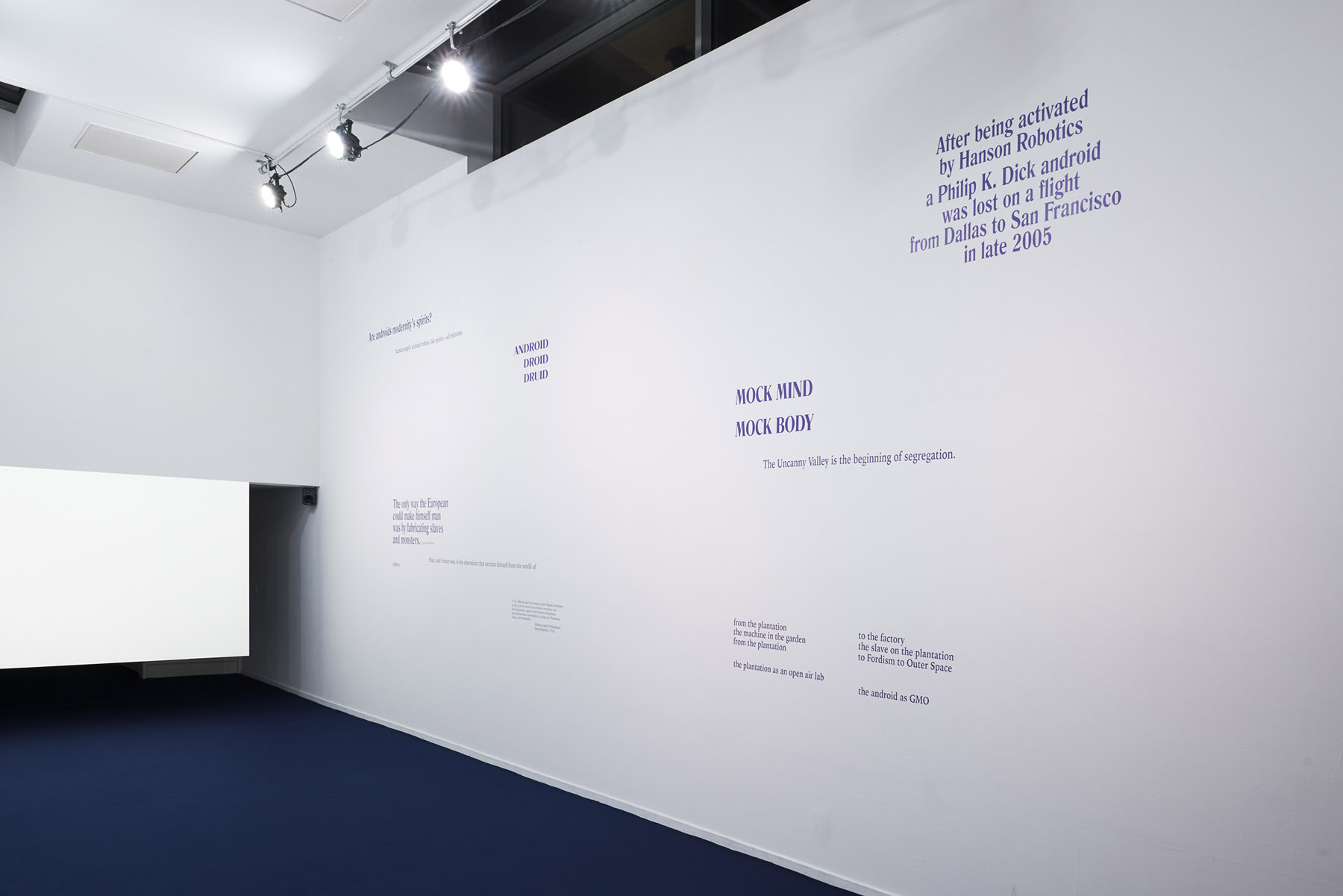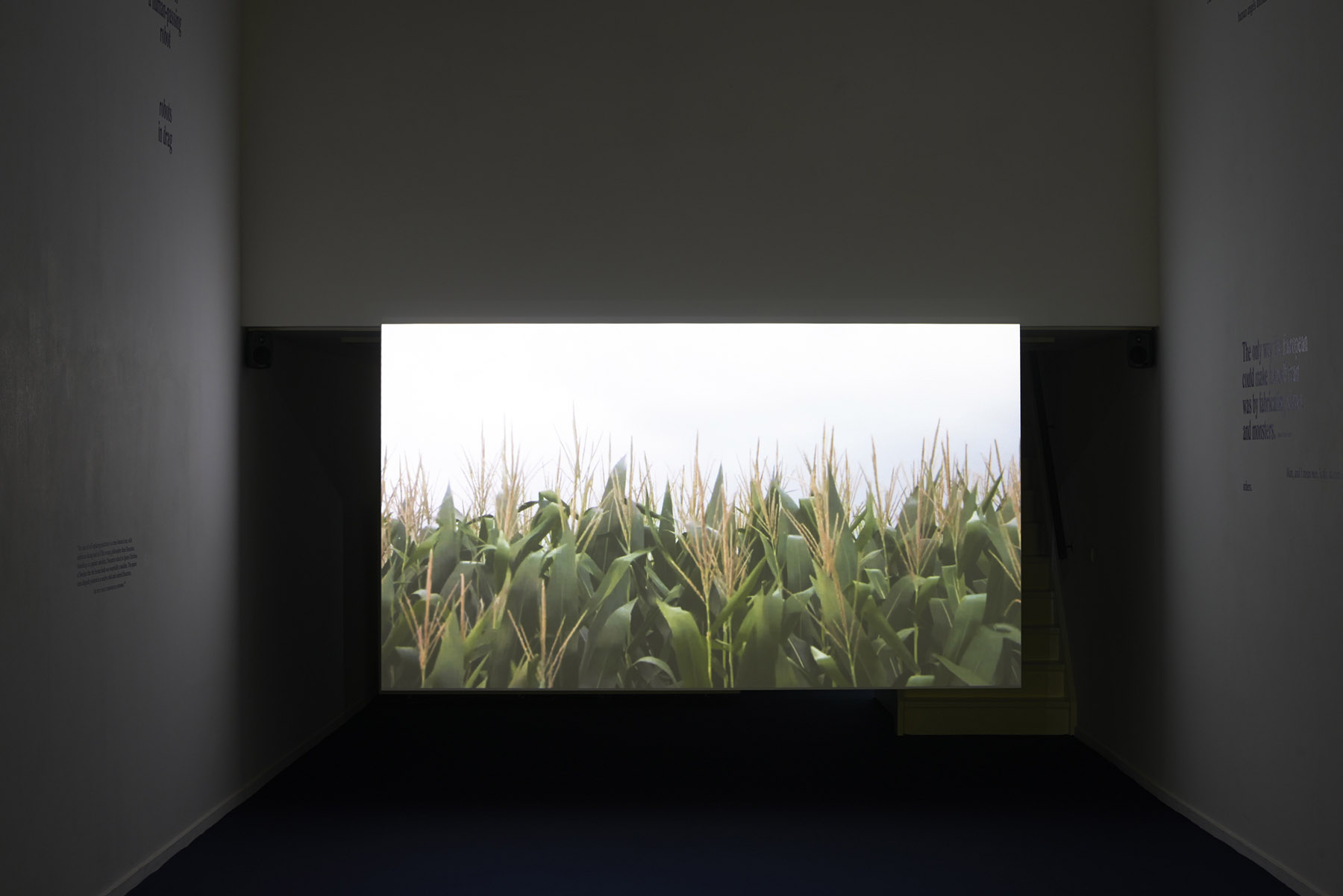Artists: Pedro Neves Marques and Zahy Guajajara
Exhibition title: YWY, Visions
Venue: 1646, The Hague, The Netherlands
Date: November 28, 2020 – January 17, 2021
Photography: Jhoeko / images copyright and courtesy of the artists and 1646, The Hague
Note: Pedro Neves Marques and Zahy Guajajara in conversation with Rosa Lléo is available here
1646 proudly presents YWY, Visions, a collaborative project on many levels, bringing together Brazil, Portugal, Spain and The Netherlands.
YWY, Visions is both the title of Pedro Neves Marques’ and Guajajara’s exhibition at 1646, and the title of the film that will be presented at a later stage in Madrid, at the esteemed CA2M (Centro de Arte Dos de Mayo) in an exhibition curated by Rosa Lleó. The film is an exciting partnership between CA2M, “la Caixa” Foundation and 1646. For the show in The Hague, Lléo and 1646 closely worked together to curate the exhibition.
In previous films Neves Marques created a character, an android played by the indigenous actress and activist Zahy Guajajara, who named her ywy, a term that means ‘land’ or ‘territory’ in her indigenous Tupi-Guarani language. Inhabiting a futuristic, yet eerily familiar Brazil taken over by monocultures, mining, and other extraction industries, YWY became a way to complicate expected roles and imaginaries about indigeneity, gender, technology, environmentalism, and science fiction in the region.
YWY, Visions presents a new phase of dialogue between Neves Marques and Guajajara, resulting in a series of new artworks, collaborations, and a book publication on the same project by Sternberg Press that will be released at CA2M. Central to the project is the android YWY, as protagonist in the narrative, as plot device, and wholly as an artwork. After wrapping up Neves Marques’ two earlier films, the artists asked themselves: Who actually is this woman? Where does she come from? How does she speak both to a Western imaginary of robots and the localized livelihood of native people?
The character’s co-invention by Neves Marques, a White European author, and Guajajara, a Native artist from the north of Brazil, sets in motion a dynamic that cannot be resolved solely by one person, but only by giving it away and sharing it with a plurality of voices. First and foremost through Guajajara, in her interpretation of what the character means, and through indigenous authors, but also non-indigenous accomplices, who will be contributing to the exhibitions and publication. This first exhibition at 1646 combines digital drawings, music, film, poetry, and both fictional and theoretical texts. These combined elements address relations between robotics/ androids, their gendered/racialized background, the distinction between wetware (brain) and hardware, and technoanimism, the practice of giving technology human and spiritual traits.
The android as a typical sci-fi figure blurs the lines between human and non-human beings, and therefore also between inclusion and exclusion, what is deemed natural and artificial. Engaging in strategies of worldbuilding, constructing imaginary worlds, YWY, Visions combines sci-fi elements with Amerindian cosmologies to contest a linear claim on the future, offering instead a conflict of many worlds and visions in between indigenous and white perspectives. In doing so, it explores how artistic expressions might both acknowledge historical legacies and present visions of futures beyond dystopia.





